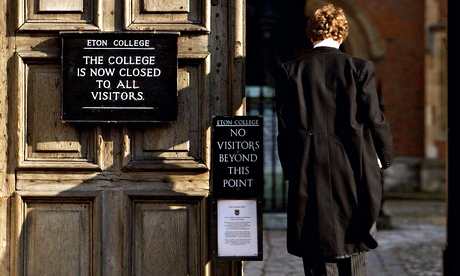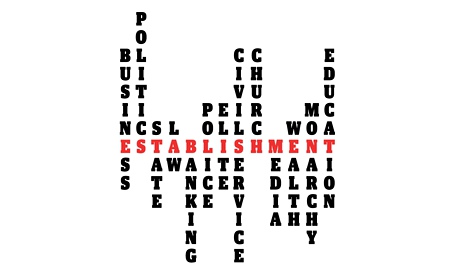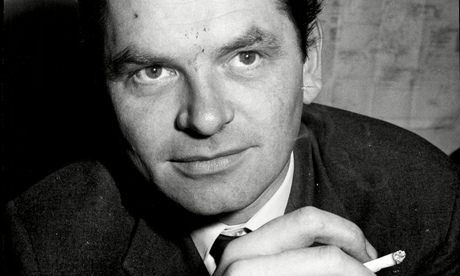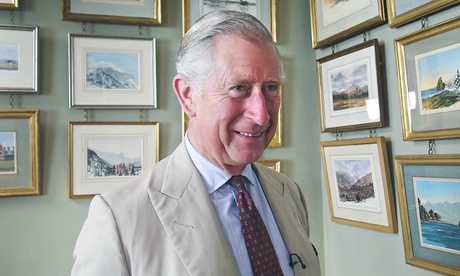Darren Berry in Cricinfo

The Muralitharan case is more complicated than your garden-variety dubious action, given his flexible joints, rubber-like wrists, and the "carry angle" of the forearm © AFP
Let's get one thing clear from the outset - almost every offspinner in world cricket has a bend in his bowling arm. It is unnatural to bowl offspin without some degree of (flexion) bend. It is the degree of bend that is the contentious issue.
In fact, it's not the bend but the straightening (extension) of the arm as it rotates to bowl that causes the headaches. It is a complicated topic, but given the increased scrutiny and subsequent angst it is causing around the world it's time for some explanation.
It should also be recognised that it's not just offspinners who have this problem. Daryl Foster, a biomechanics expert with the University of Western Australia, and a former state coach, was recently quoted as saying he has greater concern with the fast men who bend it more than the highly scrutinised offspinners do. Some would be surprised to know that even the most pure actions of Dennis Lillee and Richard Hadlee had a degree of straightening as they flung down the ball in the '70s and '80s.
The legal limit of straightening of the arm is 15 degrees. In biomechanical terms, this means the angle (flexion) at the elbow joint when the bowling arm is horizontal prior to delivery is measured, and the degree of extension that has taken place at the point of release is also measured. If the change in angle is greater than 15 degrees then a bowler's action is considered under current ICC rulings to be illegal. Sounds complex? Well, it gets worse.
The most famous name embroiled in this "chucking" controversy was and still is the Sri Lankan great Muttiah Muralitharan, who was called 19 years ago in a Test at the MCG. It strained relationships and threatened to bring a halt to the series at the time. It also elevated to the surface a talking point that still rages today as to the legality of many bowling actions around the world.
| In my experience, none of the bowlers I have worked with who have come under scrutiny deliberately try to throw the ball to gain an advantage. It is usually a biomechanical defect and/or a technical issue | |||
The Muralitharan case is even more complicated given his flexible joints, rubber-like wrists and another complex biomechanical term: "carry angle" of the forearm. This is the degree of angulation a person has in the forearm when standing in the anatomical position (upright with arms by the side, palms facing outwards). In most cases the greater the carry angle the greater the perception to the naked eye is of the appearance of throwing as opposed to bowling. It would take a biomechanist to explain this comprehensively, but I have learnt a lot in this area through necessity in recent times.
My coaching experiences in this area over the last decade have involved a couple of fast bowlers from the subcontinent, who came under severe scrutiny during my time at the IPL (with Rajasthan Royals) and more recently my involvement with the current South Australia captain and offspinner Johan Botha. In my experience, none of the bowlers I have worked with who have come under scrutiny deliberately try to throw the ball to gain an advantage. It is usually a biomechanical defect (very hard to rectify) and/or a technical issue that requires constant drilling and alignment to remedy. For the record, Botha has been reported on three occasions and on each of them found not guilty in testing and cleared.
Pakistan's Saeed Ajmal is the most recent high-profile offspinner to be called for a dubious action. This week, he was laboratory-tested in Brisbane to clear his action, or face a lengthy ban. We will know the outcome in a few weeks. Laboratory testing is the most contentious issue, as trying to reproduce exactly what happens in a competitive game environment is very difficult. Until we have sophisticated 3D technology that can be used in games, a true reflection of exactly what is taking place will never be attained. Scientists testing in a sports lab will never be able to replicate or reproduce exactly what players do in a highly competitive game environment, hence the great debate continues.
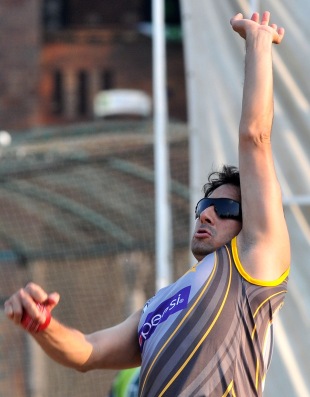
| |||
What exactly does an offspinner tend to do to give the perception that he is chucking, and more importantly how can it be rectified?
1. The jump or take-off position and finishing position in delivery stride is crucial. Any offspinner bowling right-arm over the wicket who jumps from wide of the crease and lands close to the stumps at the point of delivery has started the kinetic chain incorrectly. The results of this in the lower half of the body will greatly effect what happens in the upper half during delivery. To make matters worse, if the feet are in an open position when the front foot lands, this also tends to increase the lag of the bowling arm and ultimately exaggerates firstly flexion, then the dangerous forearm extension at the point of delivery.
2. The result of point no. 1 will cause issues with upper-body lean or hyperextension of the spine in delivery motion, and this impedes the arm's natural pathway in the bowling action. The result is a compromised action, where the body lays back significantly to allow natural arm path and consequently a bent arm inevitably results. The lower half of the body has jumped in too far and does not allow a smooth, clean action to be completed.
3. The non-bowling arm is a crucial aspect in a dubious offspin action. It is vital that it acts as a rudder to steer the mechanics of the action. It must remain strong and assist to align the body correctly in a side-on manner. The bowler must look outside the arm in delivery mode, otherwise the action will be too front-on, which generally results in bowling-arm lag time and often increased flexion and then extension in the elbow joint as the bowling action is completed.
4. Load-up position of bowling arm and hand. This has proved to be another vital component in a dubious action. Any offspinner who allows his bowling hand to rise above the mid-line of the body in wind-up generally then turns his wrist and forearm open too early before the hand passes the hip at the start of the delivery arc, and a bend in the arm occurs before the bowling arm reaches the horizontal. The action always looks ugly in these instances.
5. Finally, spearing the ball or firing it in at a pace greater than the normal arm speed of an offspinner causes all sorts of problems. The bowler endeavours to keep the batsman pinned to the crease and thus increases the velocity on the ball. The natural windmill arc of the action is lost and a javelin-type of action results. The introduction of T20 cricket has increased this tendency and created bad habits among many offspinners worldwide.
Smoothing out chinks in a bowling action is not an easy task and only constant remedial work with slow-motion video and ultimately 3D technology will assist. The naked eye can be a powerful tool but my experiences in ICC-approved testing labs around the world (Canberra, Perth and Cape Town) tells me that until we have 3D slow-motion replays available in games, the debate over illegal bowling actions will sadly continue to smoulder.
